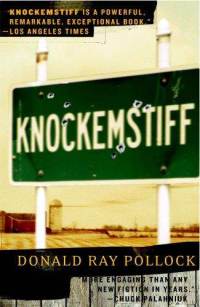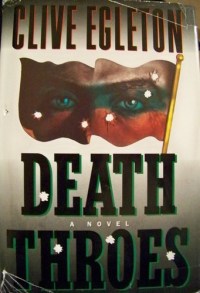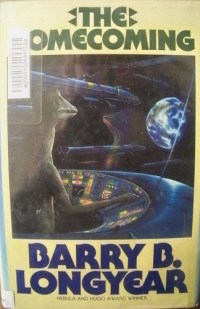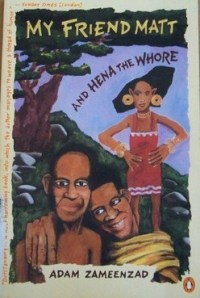Knockemstiff by Donald Ray Pollock
 Friday, January 7, 2011 at 6:34PM
Friday, January 7, 2011 at 6:34PM 
Published by Doubleday on March 18, 2008
This marvelous story collection is Winesburg, Ohio for those who live at the fringes of civilized society. It showcases the residents of Knockemstiff, Ohio, some of whom appear in more than one story. If you like stories about gritty people whose actions are motivated by raw emotion rather than rational thought, people with few redeeming qualities, poor self-esteem, bad manners, and little hope, this is the collection for you.
Two things make these stories work. First, the writing is of the highest quality: sharp, poignant, and honest. Second, the stories are character-driven and plot-driven at the same time, a rare blend in literary fiction. The stories are actually about something beyond the characters. Things happen, interesting and sometimes shocking things, as the stories progress from a clear beginning to a clear ending. For instance: **Semi-Spoiler Alert** A young draft evader who lives in the hills comes across a brother and sister having sex, kills the brother and rapes the sister before returning to hiding. A bodybuilder takes steroids at the insistence of his father who wants to recapture his glory days by living vicariously through his son (the son, of course, comes to no good end). Two kids steal a dealer's supply of pills with fantastic plans about selling them and starting a new life, but end up using all the pills. These are a few examples of the tragic and depressing but realistic life stories depicted in Knockemstiff. **End of Spoiler**
Make no mistake: the characters in Knockemstiff represent the underbelly of America. They are seedy, violent, uncouth, racist, uneducated, vulgar, and more than a little creepy. If you don't like a story unless you like the characters, you won't like this book. If stories don't appeal to you unless they are morally uplifting, you won't like this book. But make no mistake also: the characters in Knockemstiff are as real as dirt. Pollock perfectly captures the rage and hopelessness and bewilderment that infuses people who society has left behind. If you appreciate good writing for its own sake, if you think damaged people can be just as interesting as virtuous people in the hands of a fine writer, if you value the insight that comes from intense examination of the darker aspects of the human soul, Knockemstiff is a book you will appreciate and think about and remember.
RECOMMENDED



